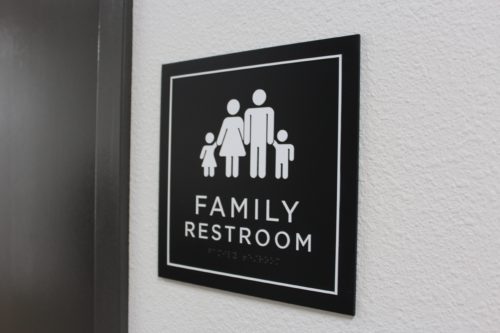Boise, ID – Understanding ADA Signs: Compliance and Requirements | Sign Shop New
Posted in: Industry News
 ADA compliance is important for all businesses. Understanding the requirements can be daunting. FASTSIGNS® of Boise, ID, is here to help companies to understand the needs and penalties in this article.
ADA compliance is important for all businesses. Understanding the requirements can be daunting. FASTSIGNS® of Boise, ID, is here to help companies to understand the needs and penalties in this article.
Overview of ADA
The Americans with Disabilities Act (ADA) was enacted in 1990 to ensure people with disabilities have the same rights and opportunities as everyone else. The ADA prohibits discrimination in all areas of public life, including places of work, schools, transportation, and places open to the public.
ADA compliance covers various types of businesses, from small mom-and-pop shops to large corporations. Some requirements include providing accessible entrances, exits, restrooms, and parking areas.
Benefits of ADA Signs
- Improved safety: ADA signs help people find their way around a facility and avoid dangerous areas.
- Increased efficiency: Easy to read and understand signs help people get where they need to go quickly and without confusion.
- Improved customer satisfaction: ADA-compliant signs make a business more accessible and welcoming to people with disabilities, leading to improved customer satisfaction.
- Improved compliance: Professional signs make the location compliant with the ADA and help to avoid costly penalties.
ADA Requirements for Compliance
Specific types of signs are required to comply with the ADA; otherwise, companies face costly penalties. The Department of Justice (DOJ) will assess civil penalties of up to $75,000 for the first violation and $150,000 for any subsequent offense.
There are a few keys to keep in mind when designing ADA-compliant signs:
- There must be a minimum of 70% contrast between the letters and the background.
- The sign must be positioned at least 48 and 60 inches from the floor.
- Non-glare finishes are required.
- The Braille text must be positioned below the tactile copy and should be of high quality.
- Characters ADA signs must be at least 2 inches tall, with a stroke width of 1/8 inch.
- The font style must be sans serif.
- Tactile signs must have braille raised at least 1/32 of an inch, and the characters should be 5/8ths wide.
Types of ADA Signs
- Directional signs help people find their way around a facility. They usually include arrows and text to indicate the direction to a specific destination.
- Wayfinding signs provide information about a facility’s layout and help people find their way to specific locations. They usually include a facility map and text to indicate the location of various rooms and amenities.
- Overhead signs indicate the locations of exits, restrooms, and other important areas. They are hung from the ceiling and placed above doorways.
- Informational signs provide general facts about a facility or its services. They are usually placed in high-traffic areas, such as lobbies and reception areas.
At FASTSIGNS® of Boise, ID, we make custom ADA signs to meet the specific requirements of the ADA for businesses. Contact us today to learn more about our ADA sign solutions.
Return to: Boise, ID – Understanding ADA Signs: Compliance and Requirements | Sign Shop New
Social Web